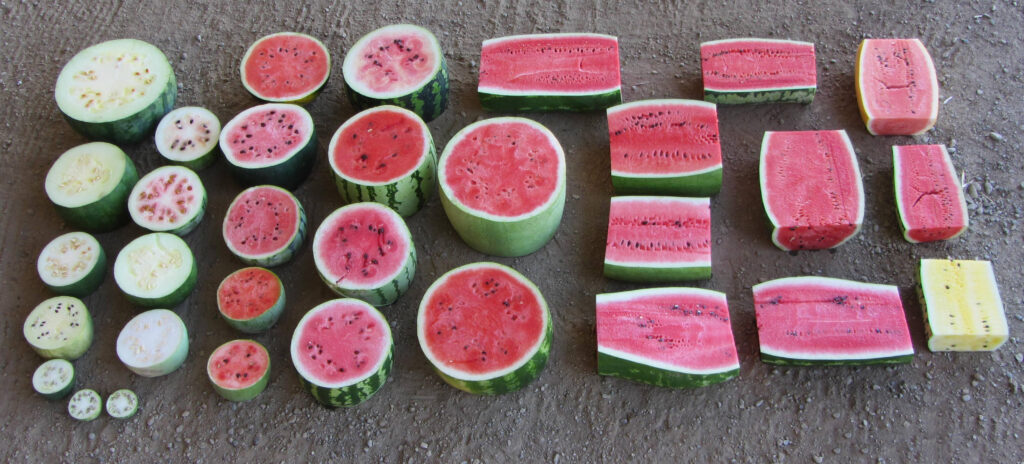
You probably wouldn’t be surprised to learn that watermelon is the second largest fruit crop in the world (if you don’t count tomatoes as a fruit), just barely behind bananas. However, you may be surprised by a few of these lesser-known watermelon facts:
- Watermelons can be considered a vegetable (specifically, a type of berry known as a pepo) and are related to cucumbers, pumpkins, and squash. It’s the official state vegetable of Oklahoma.
- Every part of a watermelon is edible, including the rind and seeds. In some cultures, the rinds are pickled, and the seeds are roasted and eaten as a snack.
- Watermelons float in water because they have a light internal structure and hollow cells inside their rind. This helped with their transportation by sea to other countries back in the day.
- The heaviest watermelon ever grown weighed 350.5 pounds (according to the Guinness Book of World Records). The average size of a watermelon is around 20 pounds.
- Square watermelons exist! In Japan, they grow cube-shaped watermelons by placing them into square glass cases while they are still growing on the vine.
BTI’s resident watermelon expert, Professor Zhangjun Fei, has conducted groundbreaking research on this fascinating fruit for over a decade.
His work includes helping sequence the watermelon’s genome, analyzing the past, present, and future of watermelon, and identifying genes to create more disease-resistant (and tastier!) watermelons.
In a recent interview as part of BTI’s Breaking Ground Discussion Series, Fei discussed the surprising nutritional value of watermelon. He noted that it is high in vitamins A and C and has the highest levels of lycopene in all fruits and vegetables. Lycopene is a powerful antioxidant linked to heart health and protection against certain cancers.1
“Lycopene is usually associated with tomatoes. In fact, I received my Ph.D. while working with tomatoes. Even I was surprised to learn that watermelon has a much higher lycopene content,” said Fei.
Want a sneak peek at what Fei and his team are working on now? Their latest research reveals extensive variations in wild and cultivated watermelons and sheds light on watermelon evolution and domestication.
The researchers built a comprehensive genetic map, called a super-pangenome, using the genetic information from 547 different types of watermelon from four different species. This super-pangenome contains all the genetic variation found in farmed and wild watermelons, and it also shows how different genes are related.
“Our super-pangenome serves as a comprehensive resource for researchers and breeders to mine and utilize genes in cultivated and wild watermelon species,” says Fei. “This could lead to developing increased disease-resistance in commercial watermelon varieties, as well as giving breeders targets to modify key fruit quality traits like sweetness, color, and rind thickness.”
Stay tuned for an even deeper dive into Fei’s latest paper!
